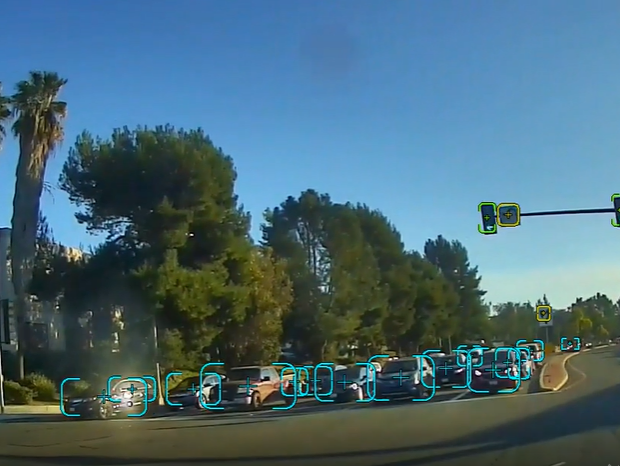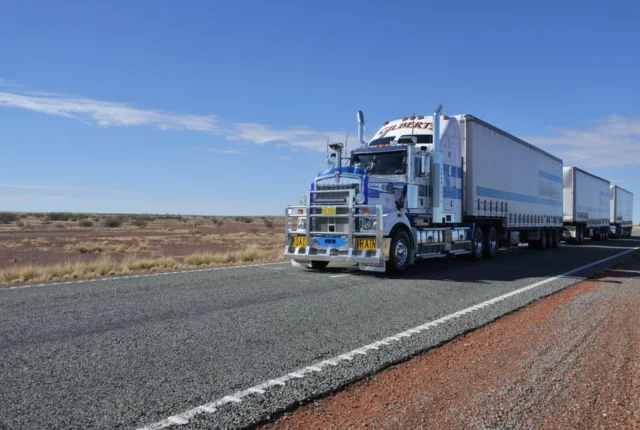
Critical Events Deep Dive
Positioning Universal’s AI Fleet Camera Solution offers many standout features and insights that help keep drivers safe on the road and optimize fleet fuel efficiency. One of these features includes the monitoring of “critical events.” This feature perfectly illustrates the thoroughness of the AI Camera Solution as a whole.
As an overview, the AI Camera records live video footage of both the truck cabin and the road while the ignition is on. However, instead of uploading up to 12 hours of footage every day, for every vehicle in a fleet, the critical events feature filters the footage that is actually uploaded to the fleet management cloud network. As the name suggests, the filtered footage only includes events that are denoted as critical — events that fleet managers want to be aware of and which could threaten the driver’s safety. These serious situations include:
The AI Camera can detect these situations in real time, and when it does, it records the event and uploads the footage to the cloud for fleet managers to see and respond to, if necessary. Also, each uploaded event is tagged according to its category, allowing for managers to easily filter through what critical events they want to look at.
So, how exactly does the AI Camera recognize these events, and why are they important? In this deep dive, we will break down each critical event and answer these questions.
Crash/Impact
For crashes and impacts, the importance of having footage of the event is easy to understand. These situations represent direct threats to driver safety, and require immediate action from fleet managers, especially in more severe accidents where the truck driver might be unresponsive. Because of the “critical events” feature, the fleet manager is notified immediately when an impact occurs, which is vital. Likewise, having the footage is invaluable for post-crash procedures. In many cases, having dash camera footage has saved companies from immense liability lawsuits, as they provided evidence that the driver was not driving recklessly. This footage also can be important to help provide context to crashes and provide better instruction to drivers in similar, future situations. For example, say a crash happens while a driver tries to navigate a slick road. Having footage of what they were going through —tight turns, other potential cars they tried to avoid, etc.— can help fleet managers understand exactly what happened and better prepare for the future.
To detect crashes, the AI Camera works with its coupled device, the FT7500, to identify objects and recognize harsh changes in acceleration. By utilizing those two measurements, the devices can flag an event and determine if a collision has occurred.
Harsh Acceleration, Braking, & Turns
Much like crashes and impacts, harsh driving events —including sudden acceleration, braking, and turning— pose significant threats to drivers and can indicate a dangerous situation on the road, whether from outside circumstances, or from risky driving practices. For both of those reasons, these events are considered critical and must be uploaded to the cloud and tagged for review. It is important to have this footage because it can help give context to the fleet manager about the driver’s conduct. Let us consider the footage below. Without the AI Camera, only the harsh braking and swerving would be identified, but the fleet manager would not know why it happened. In this instance harsh braking and turning saved the life of an animal crossing the road and is in fact an example of safe, aware driving.
For this critical event, the FT7500 gateway solution utilizes its accelerometer to identify the situation, and trigger the AI Camera to record and upload the footage.
Tailgating & Collision Risk
Tailgating and collision risk events are considered critical because they can lead to crashes with other vehicles. Tailgating is an unsafe driving practice and leads to many accidents. By uploading the relevant footage and allowing fleet managers to see the occurrences of this practice, supervisors can establish better programs and driver training to help prevent the issue. Likewise, a relative absence of these events can let managers know that this is not a pressing issue for their fleet, or one that requires attention for only a few drivers, not the entire group. The same goes for collision risks.
The FT7500 alone cannot detect events like these, but the AI Camera Solution allows for these more difficult events to be picked up. Let us start with collision risks. The AI Camera accurately identifies objects on the road, both moving and still, and can calculate distances from the object to the vehicle. If the object is moving, the speed of the moving object is also calculated by measuring how much the distance is decreasing or increasing based on the vehicle’s current speed. Finally, the solution can calculate whether the vehicle can safely brake in the current situation. If it can’t, the event is triggered. Tailgating operates very similarly and relies on the AI Camera detecting consistent proximity to an object.

Reckless Driving
Reckless driving is another critical event category, and much like tailgating and collision risks, this is a behavior where video footage and notification can improve future driver training and safety programs. If a driver engages in reckless driving, it is important for fleet managers to address the behavior immediately to keep their fleet as safe as possible.
Reckless driving is recorded by the camera and its edge AI technology identifies bad behavior. This can be swerving, drifting, drastic speeding, etc. The advanced object pickup of the AI Camera allows it to identify reckless behavior and then flag and upload the instance in question.
Stop Sign & Red-Light Violations
Finally, stop sign and red-light violations are especially important critical events for fleet managers. These violations pose significant threats to fleet safety and can prove costly to fleet operations. Many of us don’t always respect stop signs and come to a full stop — especially in neighborhoods and areas with low traffic. While in most cases this does not lead to any adverse consequences, it is a common road infraction. And for large fleets these infractions can lead to operational nightmares. By being alerted each time a stop sign or red-light violation occurs, fleet managers can be better prepared to address the issue and build out proactive programs to minimize these occurrences.
The detection of these violations shows another facet of our AI Camera technology. Not only does this camera have impeccable object pickup, but it also can identify the importance of the objects it sees. The AI Camera recognizes if the vehicle is approaching a red light or a stop sign and the FT7500 sends a report if the vehicle does not come to a complete stop. For stop signs, if the vehicle does not stop completely, the critical event flag is triggered. For red lights, if the vehicle moves before the AI Camera detects the light turning green, the critical event is triggered.
Conclusion
Having the ability to upload and alert fleet managers of critical events is critical to achieving the safest fleet operations possible. As you have seen many of these events are impossible for fleet managers to recognize without the help of the AI Fleet Camera Solution. And the critical event feature of Positioning Universal’s AI Camera allows for streamlined access to high-resolution video footage of events that actually need attention.
This not only makes fleet operations vastly more efficient, but also greatly reduces video storage costs. Likewise, it reassures drivers that the only footage that will be uploaded to the cloud is footage that can affect their safety on the road. Overall, the AI Fleet Camera Solution’s ability to detect, flag, and upload critical events makes it a complete and thoughtful solution that vastly improves fleet safety and reduces fleet costs.






Leave a Reply